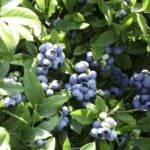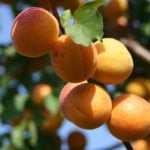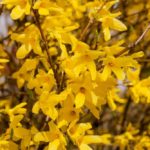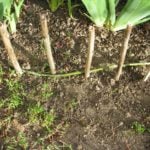Lingonberries belong to the family of lingonberries. This is an evergreen shrub of very small growth, up to 40 cm (15.7 in). The berries are bright red, ripen in late August-early September. And when the snow falls and all the trees lose their last leaves, the lingonberries will hide their dark green, shiny, like lacquered leaves under a layer of snow.
Bumblebees and bees pollinate blueberries. They carry pollen from small, white, ceramic-like flowers, similar to a bell with a delicate pink hue. But lingonberries can also self-pollinate.

A specific feature of cranberries is getting food with the help of a fungus that lives in its roots, it sucks mineral elements from the soil and transfers food to the roots.
Breeding lingonberry
Cranberries are propagated by seeds (in nature, growth occurs in late June – early July) and vegetatively: green cuttings (with this method of fruiting, the introduction is already 2 years old, and in the third year they get a full-fledged good harvest), lignified cuttings, divisions. In the latter case, it is necessary to separate part of the above-ground shoots from the mother plant, capturing a small underground part. I planted the offspring from the rhizome. So far, 3 leaflets.

Lingonberry planting
Since cranberries naturally grow in swamps, in forest belts, the soil, respectively, should be light sandy or peaty, acidic for its planting. On peat soils, the berries are larger, and the yield is larger. Clay and heavy loam will not tolerate, however, as well as flooding, despite the fact that this plant loves moisture. Therefore, the ground water level should be at least 40 cm (15.7 in), the site should not be subject to spring or seasonal flooding. Likes sunny places and good watering. In the shade, it blooms very poorly and bears fruit.
By and large, cranberries do not suffer from a lack of organic and mineral fertilizers in the soil, but they have a need for sulfur, therefore, per 1 square meter. m you need to add about 50 grams (1.8 oz) of sulfur. If there is no peat in the ground, then care should be taken to prepare the soil mixture. To do this, river sand, high peat, and sawdust from coniferous rocks are added to the soil. For 5 parts of peat, take about 2 parts of sand. It turns out that most of the mixture will consist of peat. Enrich the soil with humus and compost should not be.
It is not necessary to plant a seedling deep, the root system is fixed at a depth of about 30 cm (1 ft), so the 30×30 cm (1×1 ft) scheme is suitable for planting. After planting, water the plant well and loosen the soil around a crumb of bark or pine litter. Such mulch not only protects, but also acidifies the soil.

Lingonberry care
Mineral fertilizers can be applied when the cranberries will bear fruit. Lingonberry bushes can thicken, to avoid this, try to thin them out.
Lingonberries need good watering. In dry, hot weather, spraying will not be superfluous. Mulch and loosen the soil; mulch retains moisture well. The destruction of weeds around lingonberries is much more important than fertilizing with mineral fertilizers.
Lingonberries have excellent winter hardiness, winter well under the snow and do not require shelter for the winter. Flower buds can be damaged at temperatures below -4 °C (24.8°F).
Lingonberry can be affected by the fungus, while there is a change in the color of the flowers and the shape of the shoots.
Harvesting
Lingonberry is widely used in the treatment of many diseases. Lingonberry leaves and fruits relieve inflammation of the bladder and are indicated for various kidney inflammations. They also have an antipyretic effect.
The leaves are collected only in early spring from under the snow, before the buds appear. The crop can be harvested in October. In the summer, the collected raw materials are not suitable for medical purposes, the leaves turn black when dried.
Pluck the leaves from the bush without pruning the shoots, so as not to damage the bush. Re-collection of leaves can be made no earlier than 5-10 years after the complete restoration of the plant.
Before you put it to dry, select the blackened and damaged leaves. Spread out the cloth and spread a thin layer of leaves on it in a dark, warm place.
The berries ripen from the end of July until the beginning of frost, depending on the variety and area. The collected berries can be dried, frozen, soaked, made fruit drinks and jams.
A recipe that my grandmother tried many times: boil 60 g (2.1 oz) of leaves for 3 cups of water in an enameled bowl for 10 minutes. After cooling, strain and drink during the day in 3 doses. This decoction is good for the liver and kidneys.


















